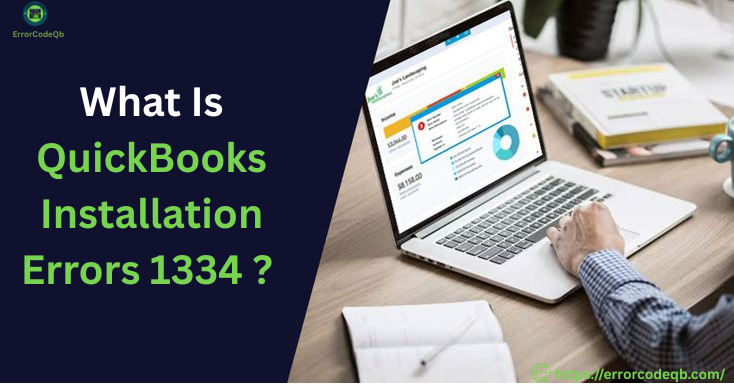The popular accounting tool QuickBooks is meant to let companies effectively handle their money. Sometimes, however, users find installation mistakes that can cause the program not to be set up correctly. This article will lead you through the typical QuickBooks installation mistakes and provide fixes.
Common QuickBooks Installation Errors
Users of QuickBooks might run into some typical installation mistakes below:
- When QuickBooks runs across a Microsoft.Net Framework issue, Error 1603 results.
- Usually pertaining to a damaged or missing file, Error 1904
- Installation errors like 1935 are often linked to conflicts within the .NET Framework.
- Error 1402: Result of inadequate rights to access certain registry keys.
- QuickBooks Freezing During Installation: The setup process gets stuck and does not forward.
- Error 1334 or 1722: Problems with either corrupted or absent installation files.
- QuickBooks Not Opening After Installation: Though installed, the program does not start correctly.
How to Fix QuickBooks Installation Errors
- Use QuickBooks Install Diagnostic Tool
The Install Diagnostic Tool offered by QuickBooks is a specific tool designed to find and resolve problems connected to installation automatically.
Download and install the QuickBooks Tool Hub from the official site to use the Install Diagnostic Tool effectively:
- Install and see the Quick Books Tool Hub.
- Click on the tab that addresses installation-related problems.
- Run the QuickBooks Install Diagnostic Tool after selecting it from the list.
- Restart your computer, then try reinstalling QuickBooks.
- Update Windows
In some cases, the installation process is affected by old or missing Windows updates. Steps to Update Windows:
- Opening Settings using Press Windows + I
- Select Update & Security.
- Select ‘Check for Updates’ and proceed to install all available updates.
- Once your computer restarts, initiate the QuickBooks installation once more.
- Enable Network Framework
QuickBooks cannot run as it should without Microsoft.NET Framework. Should it be absent or deactivated, installation problems might arise:
- Press Windows + R; type appwiz.cpl; then click Enter to enable the Net Framework.
- Turn Windows functionalities on or off with a click.
- Check that the required .NET Framework versions (3.5 and 4.5 or higher) are enabled.
- Click OK to restart your computer.
-
Repair the Microsoft.Net Framework Manually
- Should activating the Nets Framework fail, you may have to fix it.
- Download the Microsoft.NET Framework Repair Tool from Microsoft’s website to start repairs.
- Use the tool as directed on-screen.
- Restart your machine then try the installation once again.
- Manage QuickBooks under Administrator
- Using QuickBooks with admin rights can prevent issues caused by insufficient permissions.
- Run the QuickBooks setup with admin privileges by right-clicking the file and selecting ‘Run as administrator’.
- Specify Run as Administrator.
- Use the installation cues and see if the problem is fixed.
Create a fresh Windows User Account.
Making a new Windows user account might assist if yours is corrupted now. Procedures to Create a New User Account:
- Access Accounts by opening settings.
- Click Users include Family.
- Choose to add someone else to this PC.
- Use the steps to establish an administrator privilege new account.
- Try installing QuickBooks once again after logging on to the new account.
Look for either firewall interference or antivirus.
Quick Boards installation might be blocked by security software. To temporarily deactivate the antivirus or firewall, open your antivirus program and turn off real-time protection:
- Type Windows Defender Firewall in the search box and open it if using Windows Firewall.
- Click Turn Windows Defender Firewall on or off.
- Turn off Windows Defender Firewall for Public and Private networks separately.
- Try once again running QuickBooks.
Create QuickBooks cleanly.
One may fix ongoing installation mistakes with a clean install:
- Perform a clean install by first uninstalling QuickBooks from Control Panel > Programs and Features.
- Get the QuickBooks Clean Install Tool downloaded.
- Use the program and follow the steps to tidy last-minute files.
- Restart your computer, then reinstall QuickBooks.
Fix QuickBooks Instinctive Program
Should QuickBooks be installed but not working as expected, fixing the installation may be beneficial. Opening the Control Panel and navigating Programs and Features can help you Repair QuickBooks Installation:
- Click Uninstall/Change from the QuickBooks list.
- Choose Repair, then follow the steps.
- Restart your machine then see if the problem is fixed.
Examine System Need:
Make sure your system satisfies basic QuickBooks requirements. Minimum System Requirements for QuickBooks:
- Operating System: Windows 10 or a variant later
- Processor: 2.4 GHz or higher; RAM: 8GB or more; disk space at least 2.5GB; Microsoft.NET Framework: Version 4.5 or later
Lastly
While installing QuickBooks should be easy, system compatibility problems, missing dependencies, or security program intervention might cause problems. Most QuickBooks installation problems will be fixed and your accounting software will be operational by using the troubleshooting techniques in this book. Should the issue continue, think about getting expert help from QuickBooks Support.

